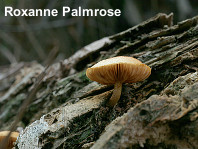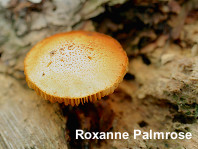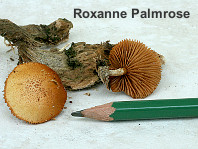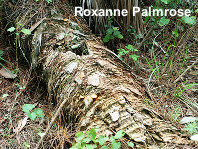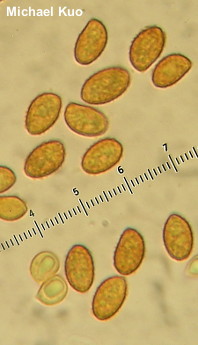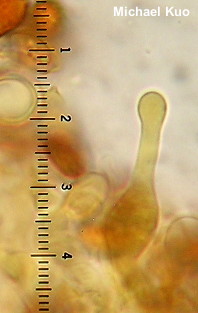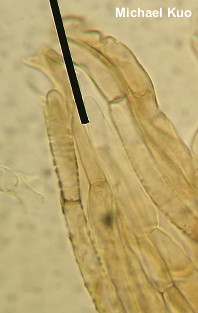| Major Groups > Gilled Mushrooms > Dark-Spored > Gymnopilus > Gymnopilus palmicola |

|
Gymnopilus palmicola [ Basidiomycota > Agaricales > Strophariaceae > Gymnopilus . . . ] by Michael Kuo This rarely documented species is known from the Gulf Coast and the Caribbean, and can be found decomposing the wood of fallen palm trees. It is a relatively small mushroom that features a finely scaly, dirty orange cap; gills that are at first pale yellow and later rusty orange; a stem with a notable ring zone; and, under the microscope, fairly large, warty spores and capitate cheilocystidia. Gymnopilus cyanopalmicola was described from Mexico (Guzmán-Dávalos, 2006), differing in its bluing stem. However, I have seen collections of Gymnopilus luteofolius from the same log bruise blue one year and not the next, and Pluteus americanus does not always bruise blue; Gymnopilus cyanopalmicola and Gymnopilus palmicola may be the same thing. Thanks to Roxanne Palmrose for collecting, documenting, and preserving Gymnopilus palmicola for study; her collection is deposited in The Herbarium of Michael Kuo Kuo. Description: Ecology: Saprobic on the deadwood of palm trees (reported on Sabal palmetto, Serenoa repens, and Roystonea regia); growing scattered, gregariously or in clusters; summer, fall, and winter; apparently distributed from the Gulf Coast of the United States to the Caribbean. The illustrated and described collection is from Florida. Cap: 1.5–2.5 cm (reported up to 5 cm by others); convex to planoconvex; dry; surface covered with small, cinnamon, radiating, innate scales, especially over the center; dull brownish orange; the margin adorned with tawny veil fragments. Gills: Broadly attached to the stem; nearly distant; pale yellow at first, becoming rusty brownish orange; short-gills frequent; when very young covered by a thin partial veil. Stem: 1–2 cm long; 2–3 mm thick; more or less equal; fibrillose; with a fairly persistent ring zone near the apex; whitish to brownish; fibrillose; basal mycelium white. Flesh: Yellowish. Odor and Taste: Taste not recorded; odor not distinctive. Chemical Reactions: KOH reported as magenta on gills (Abraham & Loeblich, 1995). Spore Print: Reported as rusty brown. Microscopic Features: Spores 8–11 x 5–6 µm; ellipsoid to slightly amygdaliform; finely warty; brownish orange in KOH; dextrinoid. Pleurocystidia not found. Cheilocystidia 25–35 x 7.5–10 µm; fusoid-ventricose with a long neck that develops a subcapitate to capitate apex; thin-walled; smooth; hyaline to orangish-brownish in KOH. Pileipellis a cutis; elements 5–10 µm wide, slightly constricted at septa, clamped, often finely encrusted with brown material; terminal cells cylindric with rounded apices, sometimes aggregated into upright fascicles. REFERENCES: Murrill, 1913. (Saccardo, 1925; Hesler, 1969; Abraham & Loeblich, 1995.) Herb. Kuo 10251403. This site contains no information about the edibility or toxicity of mushrooms. |
© MushroomExpert.Com |
|
Cite this page as: Kuo, M. (2016, July). Gymnopilus palmicola. Retrieved from the MushroomExpert.Com Web site: http://www.mushroomexpert.com/gymnopilus_palmicola.html |
